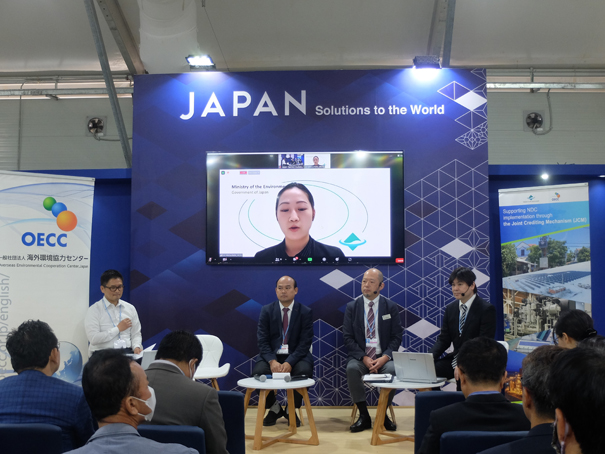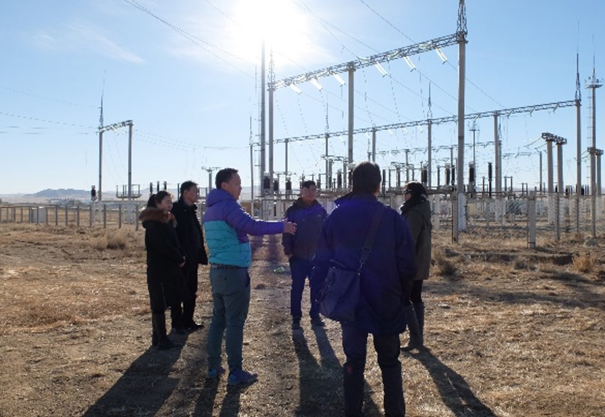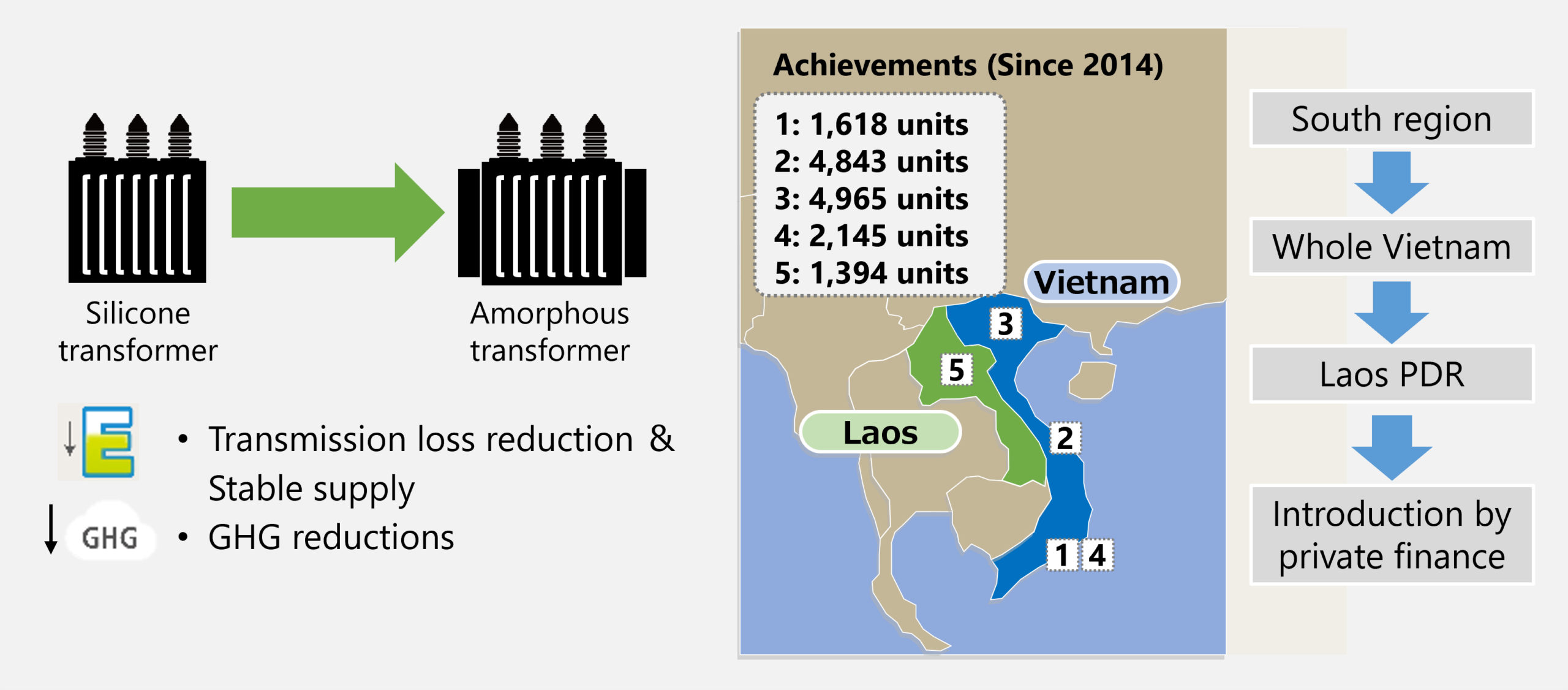
Activities
Joint Crediting Mechanism (JCM)
Role of the OECC in the JCM
The Overseas Environmental Cooperation Center, Japan (OECC) has played a central role in the diffusion of the Joint Crediting Mechanism (JCM), a scheme by which the Japanese government assists the implementation of projects for GHG emission reductions in other countries by private companies etc., right from the initial period (in 2013). Collaborating with governments in the partner countries and Japanese companies, our staffs with expert knowledge and know-how provide support for the introduction of decarbonized infrastructure based on the developmental needs in the partner countries, the overseas expansion of business by Japanese companies, and the development of JCM projects. In addition, the OECC examines market mechanisms tied to the JCM and carbon trading as well as trends in carbon markets, and disseminates the latest information, including that gained through its participation in COP meetings and other forums of international negotiation, through the “Carbon Markets Express“, which is the website of the Ministry of the Environment and managed by the OECC. Furthermore, it also supports the process of inspection of JCM projects and amounts of GHG emission reduction by third party entities (for confirmation of validation and verification).
Click here for a PDF showing the OECC’s record of supporting JCM project formation.

Scene from a side event held at COP 27

Coordination with people involved before construction of a renewable energy power plant
Example of approaches: Development of projects for the introduction of amorphous high-efficiency transformers in distribution networks
As noted above, the OECC provides support from the project development stage to that of formation as a JCM project. One such example is its support of a project for the introduction of amorphous high-efficiency transformers in power distribution networks in Vietnam (see the page introducing project cases). This project is aimed at reducing distribution loss and CO2 emissions in the power system by replacing the conventional silicon transformers with high-efficiency amorphous transformers. Together with Japanese companies, the OECC promoted the export of amorphous cores and the production of transformers using them in Vietnam. On top of this, it presented a project proposal to the regional electric power companies and made use of the program for financial support provided by the Japanese government through the JCM. As a result, more than 10,000 such transformers have been installed. At present, amorphous transformers are viewed as the front-runner technology and have become the standard in procurement activities by Vietnamese electric power companies. Prices are coming down thanks to the domestic production, and this is leading to the diffusion of low-carbon technology that is not dependent on supporting systems.

Phased diffusion of amorphous transformers
Formation of JCM projects based on private-sector capital and support for use of JCM credits
Thus far, the Japanese government has promoted the formation of JCM projects using subsidies and other governmental funding. Its plan for preventing global warming sets a target of 100 million tons for the amount of GHG emission reduction and absorption by fiscal 2030 through JCM implementation. The formation of JCM projects based mainly on private-sector funding is also important for attainment of this target. The OECC is assisting the formation of private-sector JCM projects by drawing on the knowledge and network grounded in its support for the formation of past JCM projects. In light of the rising interest in recent years in use of carbon credits by private companies and other organizations, the OECC will also provide comprehensive support for JCM promotion extending to the creation, trading, and use of other carbon credits in addition to those in private-sector JCM projects.
Dissemination of information concerning JCMs and market mechanisms
The OECC provides all sorts of information on the JCM and market mechanisms in “Carbon Markets Express” (MOEJ website), the information platform website that it manages.
– Commentary page: International trends in market mechanisms (MOEJ website)
Article 6 of the Paris Agreement, which is the international framework of action on climate change, contains rules regarding use of market mechanisms for efficient promotion of GHG emission reduction worldwide. This page presents easy-to-understand profiles, centered on Article 6, of various approaches applying market mechanisms, such as “Reducing Emissions from Deforestation and Forest Degradation (REDD+)” and “Carbon Offsetting and Reduction Scheme for International Aviation (CORSIA)”.
– Column on the latest trends in JCM and market mechanisms (MOEJ website)
The column page introduces excellent examples of JCM projects implemented in various countries around the world. The JCM is contributing not only to the reduction of GHG emissions but also to the promotion of sustainable development in developing countries and sustainable management by businesses. The page introduces cases with a focus on the wide-ranging benefits (multi-benefits) of the JCM. Apart from this information, it posts reports on side events at international conferences as well as on webinars, and timely information on the latest trends in carbon markets and carbon credits.
